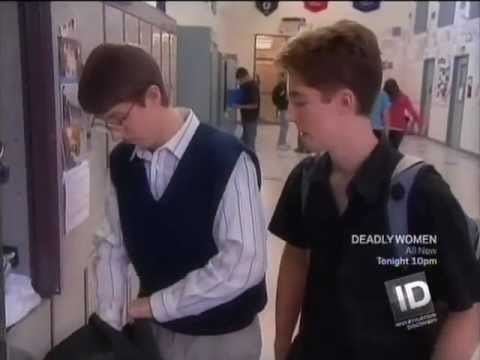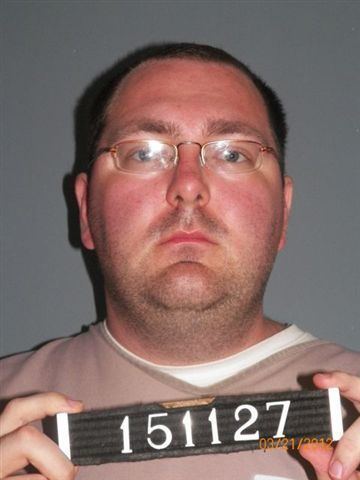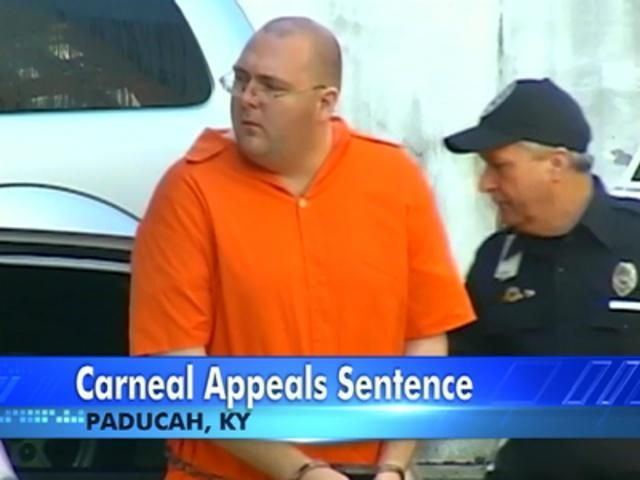Date December 1, 1997 Deaths 3 | Non-fatal injuries 5 Name Heath School | |
 | ||
Weapons .22 caliber long rifle, 12 gauge pump-action shotgun, Ruger MK II .22-caliber pistol | ||
Survivors remember heath high school shooting nearly 17 years later
The Heath High School shooting occurred at Heath High School in West Paducah, Kentucky, United States, on Monday, December 1, 1997. Fourteen-year-old Michael Carneal opened fire on a group of praying students, killing three and injuring five more.
Contents
- Survivors remember heath high school shooting nearly 17 years later
- Heath high school shooting afgangspr ve
- Shooting
- Killed
- Wounded
- Trial
- Possible motives
- Lawsuit
- Stephen King
- Popular culture
- References

Heath high school shooting afgangspr ve
Shooting

On December 1, 1997 Carneal wrapped a shotgun and a rifle in a blanket and took them to school, passing them off as an art project he was working on. He also carried a loaded Ruger MK II .22-caliber pistol in his backpack. Carneal rode to school with his sister and arrived at approximately 7:45 a.m. When he arrived, he inserted earplugs and took the pistol out of his bag. He fired eight rounds in fast succession at a youth prayer group. Three girls died while hospitalized and five others were wounded.
A member of the prayer group, Benjamin Strong, testified that Carneal dropped the gun of his own accord when he was finished. Carneal placed his pistol on the ground and surrendered to the school principal, Bill Bond. After dropping the gun, Carneal said to Strong: "Kill me, please. I can't believe I did that."
Killed
Wounded
Trial
In October 1998, Judge Jeff Hines accepted a plea of guilty from Michael Carneal, due to his mental illness (see below). Under a plea arrangement, the judge agreed to accept the pleas on condition that Carneal would receive a life sentence with the possibility of parole in 25 years (2023). According to prosecutor Tim Kaltenbach, the plea allows Carneal to receive mental health treatment during imprisonment as long as this is necessary for him or until he is released. Carneal was transported to the Kentucky State Reformatory in La Grange when he turned 18 where he remains. Prior to that he was held in at Northern Kentucky Youth Development Center, a Kentucky Department of Juvenile Justice facility in Crittenden. Carneal's Kentucky Department of Corrections (KDOC) ID is 151127. Carneal began serving time with KDOC on June 1, 2001.
In 2007, Carneal filed an appeal claiming that he was too mentally ill to plead guilty in 1998 to the shooting at Heath High School and asked the Kentucky Supreme Court for a re-trial. Prosecutors appealed and the Kentucky Supreme Court set up a hearing that was scheduled for September 11, 2008. The Court's ruling would decide whether to grant Carneal a new competency hearing and a trial. The Kentucky Supreme Court rejected his request and Carneal will continue to serve out his sentence.
Possible motives
According to reports, Carneal had been bullied by other students and suffered from anxiety, depression and severe paranoia. His paranoia was manifested in habits such as covering up vents and windows while in bathrooms, because he believed he was being watched. Following the shooting, Carneal was diagnosed with schizotypal personality disorder and dysthymia. Dr. Kathleen O'Connor, who treated Carneal while he was incarcerated at the Northern Kentucky Youth Development Center, initially agreed with this diagnosis but later determined that Carneal actually had paranoid schizophrenia. Dewey Cornell and Diane Schetky, who evaluated Carneal after the shooting, later changed the diagnosis to schizophrenia. He has been hospitalized several times since the start of his incarceration due to psychosis, and takes the anti-depressant Zoloft and Geodon, an anti-psychotic used to treat schizophrenia.
Weeks before the incident, Carneal stole a .38-caliber handgun from his parents' room and attempted to sell it. A student took the gun, threatening to tell police if Carneal did not give it to him. Additionally, Carneal had told students that "something big is going to happen on Monday" but no one took him seriously.
In the weeks before the shooting, Carneal stole several firearms from both his own home and a neighbor's home.
On the afternoon of Thanksgiving Day, Carneal went to his neighbors home and broke into the garage, taking:
Later, he also stole:
Presumably sometime after Thanksgiving Day, Carneal stole two shotguns from his father's closet and hid them under his bed.
Lawsuit
In early 1999, the parents of three victims represented by Jack Thompson filed a $33 million lawsuit against two Internet pornography sites, several computer game companies and makers and distributors of the 1994 film Natural Born Killers and the 1995 film The Basketball Diaries. They claimed that media violence inspired Carneal and therefore should be held responsible for the deaths that occurred.
The case was dismissed in 2001. The 6th U.S. Circuit Court of Appeals ruled that it was "simply too far a leap from shooting characters on a video screen to shooting people in a classroom." The same year, an identical case was brought against the same companies by the family of the teacher killed in the Columbine High School massacre. It was dismissed in 2002. Both Thompson and 79th United States Attorney General John Ashcroft claimed Carneal's proficient marksmanship was due to practice in violent video games.
Stephen King
Carneal had in his locker at the time a copy of Stephen King's novel Rage (first published in 1977 under the pseudonym Richard Bachman). After this shooting King requested his publisher to allow it to go out of print, fearing that it might inspire similar tragedies. Rage for a time continued to be available in the United Kingdom in The Bachman Books collection, although the collection now no longer contains Rage. King's other Bachman novels are available in the US in separate volumes.
